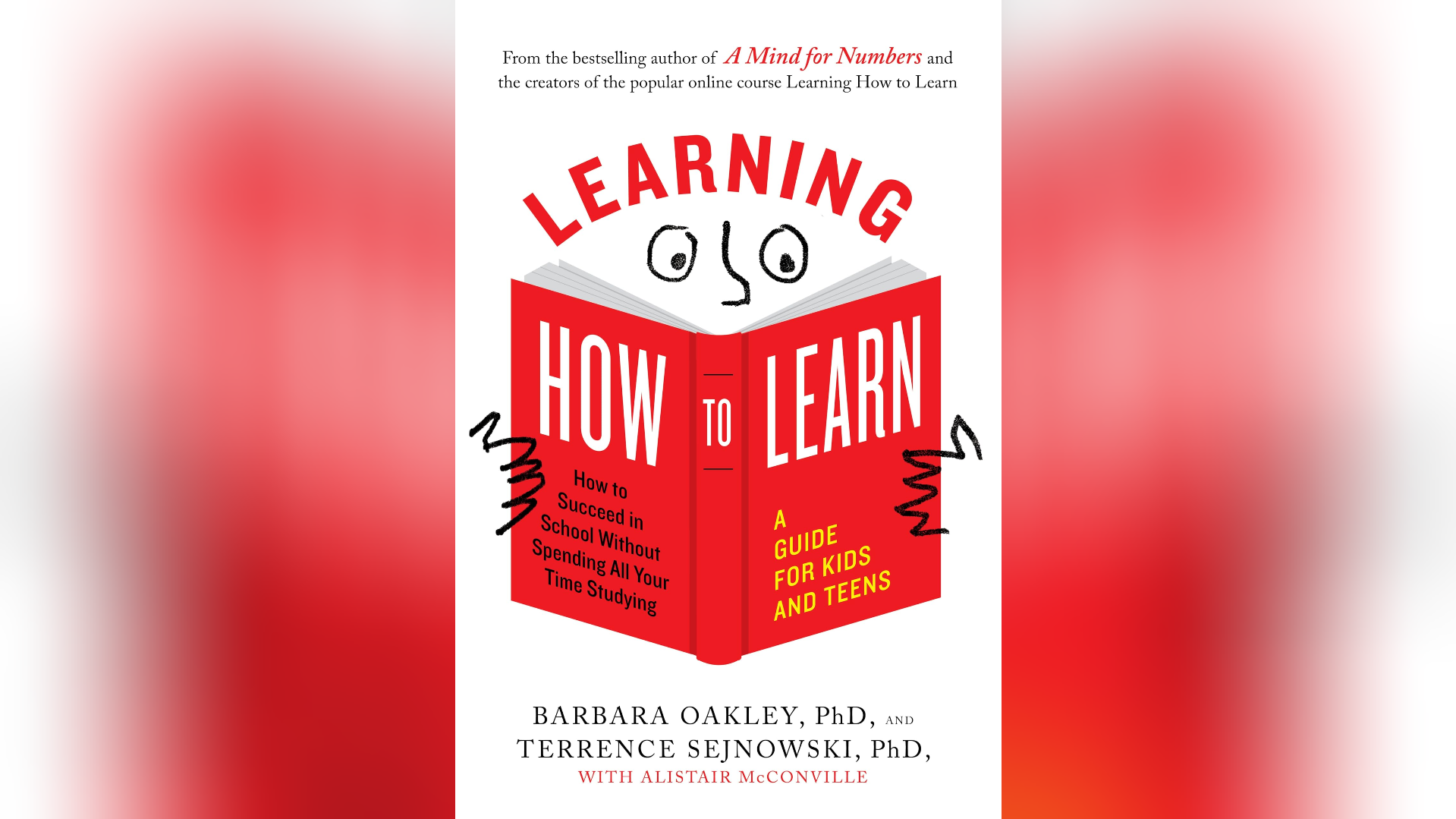Learning How to Learn: How to Succeed in School Without Spending All Your Time Studying by Barbara Oakley, and Terrence Sejnowski with Alistair McConville

In this post, I’ll be sharing key takeaways from a book that offers practical strategies for learning just about anything more effectively. I’ll also include some personal reflections on what’s worked for me when it comes to studying and picking up new skills.
It’s a fairly short read, but every tip packed inside is worth trying out. Each one has the potential to boost not just how efficiently you learn, but how much you enjoy the process too—so it’s well worth experimenting to see what suits you best.
How to Make Things Easier?
Our brains work in two key modes: Focused and Diffuse.
- Focused mode is when you're concentrating hard, like when learning something new or solving a tough problem.
- Diffuse mode kicks in when your mind is relaxed and not fixated on anything specific—this is when creativity often flows.
Switching between these two modes is crucial for effective learning and problem-solving. It helps new ideas connect and strengthens understanding.
So, how can you activate diffuse mode?
Try activities like:
- Playing a sport
- Going for a walk, jog, or swim
- Riding a bike
- Drawing or painting
- Taking a bath
- Listening to music
- Playing a musical instrument
- Sleep!!
That said, it’s important to start with focused learning. To solve problems well, you need to build a solid foundation first—creativity works best when the basics are already in place.
How to Beat Procrastination
Procrastination = putting things off until later. This is something most of us deal with, whether we’re students or working adults.
But before we try to fix it, it helps to understand why we procrastinate. When we think about doing a task we find unpleasant or difficult, a part of the brain called the insular cortex lights upit’s the same area linked to pain. In short, just thinking about the task feels uncomfortable.
The good news? That discomfort fades once you actually start the task. The insular cortex settles down, and the task becomes more manageable.
So, the trick is to just get started. One proven method to help with this is the Pomodoro Technique:
- Shut off all distractions
- Set a timer for 25 minutes
- Focus on one task (avoid multitasking)
- Take a 5-minute break after
- Repeat
Personally, I tweak it a bit. I usually set the timer for 45 minutes to an hour, then take a longer break afterward. You can experiment to find what works best for your attention span and energy levels.
By using this technique, you can slowly break the habit of procrastination and make better use of those few minutes you'd otherwise spend scrolling through social media or playing a quick game.
How to Leverage on the Idea of Brain Links
Some Basic Facts About Nerve Cells
Neurons, or nerve cells, are the building blocks of your brain. They send out electrical signals that carry information as you think, learn, or remember something.
Each neuron has three main parts: the dendrites, the cell body, and the axon.

- Dendrites act as the receiving ends of the cell.
- The axon is like a long arm that carries signals away from the soma and towards the next neuron.
- These signals are passed across a narrow gap called the synapse, which connects the axon terminal of one neuron to the dendrites of another.
When you learn something new, your brain forms fresh connections between a small group of neurons. At first, these connections are weak. But with regular practice, those links grow stronger and more efficient.
The takeaway here is simple: Practice makes perfect.
Why Is Sleep Necessary to Learn?
A lot of your brain’s recovery and growth takes place while you’re asleep. During this time, dendrites—the branches that help neurons communicate—can grow or fade. This means your brain is forming and adjusting synaptic links even when you’re unconscious. The information you learned earlier in the day is now settling in.
That’s why cramming before assessments isn’t ideal. When you spread out your learning across several days, you give your brain the chance to build and strengthen these connections more effectively.
Understanding Memory Systems
Your memory works in two main ways:
- Working memory is what you’re actively thinking about at any given moment.
- Long-term memory is like a storage system, with bits of information scattered across different areas of the brain.
Working memory has a much smaller capacity compared to long-term memory. You can only hold a limited amount of information in it at one time.
Metaphor
Imagine working memory as an octopus with only four arms, each trying to carry a small backpack. Long-term memory, on the other hand, is like a school locker—it can hold much more, but takes a bit of effort to access.
5 Step to Remember Things
- Focus
Start by paying close attention to what you want to remember. If your mind is distracted, the information is less likely to stick. - Practice
Repetition matters. Whether it’s trivia facts, your daily to-do list, or phone numbers, get into the habit of actively recalling them. - Picture It
Our brains are naturally better at remembering images than abstract facts. Try turning what you want to remember into a mental picture or visual story. - Store It
Anchor new information by connecting it to something you already know. Making links between ideas helps your brain store them more effectively. - Recall
This is the most important part. Keep recalling the information. Use flashcards if that works for you. Personally, I tend to say things out loud or visualize the words as text in my head—it helps form a mental picture that sticks.
Other tips:
- Use mnemonics
Mnemonics can be a fun and effective way to remember steps or lists. For example, FPPSR (Focus, Practice, Picture, Store, Recall) can turn into something like Five Pink Pets Store Rice. You can come up with better or funnier ones to help the information stick. - Make up songs
Turning facts into songs helps with long-term recall. I still remember most of the periodic table from a song I learned from AsapSCIENCE. Even after five years, it stays with me. - Create metaphors
Try comparing the idea you want to learn with something you already understand. This helps build a mental link and makes the concept easier to remember. - Take good notes
While handwriting is proven to be better for memory, sometimes lectures are too long to keep up. I’ve had the same experience.
Usually, I type out notes that cover about 80 percent of the lecture content. Then, during revision, I handwrite only the most important points, especially those I missed when practicing or couldn’t recall easily. - Teach someone else
Teaching is one of the best ways to deepen your understanding. Studying in groups helps because questions come up that you might not have thought of.
Although answering others’ questions takes time away from your own revision, it helps strengthen your memory. It also makes you more careful with your explanations so your friends can understand your points clearly. - Sleep well
Getting enough sleep is usually the hardest during exams, especially when anxiety is high. Still, try to exercise regularly and avoid screen time before bed. These habits can improve sleep quality and help your memory.
Continued: How to Leverage on Brain Links
A set of brain-links is basically a pathway of connected neurons in your long-term memory that forms through practice. These connections help your working memory process information faster.
To build strong brain-links, you need plenty of practice. Once you have several brain-links, try connecting them together to create a network of links.
It’s important to avoid distractions and jumping between different brain-links too often. Doing that can make you mentally tired much faster.
Enjoyment comes with mastery. Be patient, get through the starting learning curve, and brain-links will form. Soon, you will reap the benefits of mastery.
How to Pump Up Your Brain

These tips are pretty common and people mention them a lot, but that doesn’t make them any less important, or easy to stick to.
First, exercise releases something called BDNF, which stands for brain-derived neurotrophic factor, or “Brains Definitely Need Food!” This helps your dendrites grow. Plus, exercise is a great way to switch into diffuse mode, which helps with passive learning and making new connections between ideas.
Second, sleep helps build new synaptic connections and clears out your hippocampus, the part of your brain that stores information, making space for new learning.
Third, eating foods like onions, cabbage, colorful fruits, dark chocolate, and nuts is good for your brain. It’s best to avoid processed foods like fast food and sweets whenever you can.
How to Create More Brain Links
Short answer: Actively work through the problem or activity.
- Avoid lazy learning where you just repeat the same brain-link, like playing the same song over and over instead of trying to learn a new one.
- Interleave your practice by mixing different types of problems. A common way students do this is by working on sample papers that cover the entire syllabus, jumping between different questions.
- Focus on being efficient with your time and resources when creating brain-links.
- Practice actively. Do it again and again. Get feedback to correct yourself. Change up your practice methods to see things from different angles. For example, when learning a new language, try speaking, reading, writing, and listening.
- Some advice for math, science, and other abstract subjects:
- Try not to peek at the solution!
- Personal experience: after learning something, explain it to yourself from start to finish. Focus on why each point matters and how you arrived at that conclusion. Pay attention to keywords your teachers emphasize in class and repeat them to yourself. Do the questions, note what you missed, and revise before exams.
- To improve writing, try Benjamin Franklin’s method
- Take a piece of excellent writing and jot down a few words about the main idea.
- Then, try to recreate the sentences in your head.
- Compare your version with the original to see how it’s better.
- You can even write poetry inspired by these hints. This helps actively build your writing skills instead of just memorizing good writing from others.
How to Support yourself While Studying
FAQs about Studying
- Is music necessary?
- It really depends on the person. Be honest with yourself about whether it helps you or not.
- For me, when I’m trying to focus on learning something completely new, I usually avoid music altogether. But if I’m doing something like writing blogs (like this one), I like to have some soft classical or anime piano music playing, especially if my surroundings are a bit noisy.
- Studying in different places?
- Yes, you should definitely try that. Train yourself to focus no matter where you are, since tests don’t usually happen in the same spot every time.
- Are you more of a Auditory or Visual learning type?
- Well, why not do both.
- Think of yourself as an 'all-inclusive' learner! Multisensory learning is the most effective kind. For everyone.
- Did you get enough sleep?
- 8 hours are always the recommended.
- But it's hard, if the nature of your work is not allowing it.
- Mitigate it by
- Being efficient to save up time for more sleep
- Eat healthily and exercise to improve sleep quality
- Do you do the hardest or easiest work first?
- Research suggests you to do the hardest task at the beginning of your work period, as it feels great.
- Do you set a quitting time for your studies each day?
- Try a shutdown ritual to remove yourself from work.
- However, one exception. Before you go to sleep, make a few notes in your learning journal. But avoid using gadgets.
An example of learning journal from the book:

- Do you think that you are a slower learner? And everything is just harder and life seems unfair?
- Well, the book offers a different view point. Although you are slower, but you can do just as well, sometimes even better than fast learners.
- How so? By having a poor working memory, you are able to simplify and link ideas together, as you can't hold that many thoughts in mind at one time. This results in an elegant, creative simplification of the ideas. Even if one idea slips away, another pops in, and this fosters creativity.
- Is videos games good?
- Yes, but only certain types that practices your spatial abilities, like action video games or Tetris. Be aware that they can be addictive. Cut back if it's interfering with other parts of your life.
- Is it good to learn something completely different?
- Yes. People often think that specializing and putting all the time into the same thing, and you will be great at it. But, by doing something completely different, your brain finds a way to make those ideas useful for your main passion.
- It's the idea of 'transfer' that finds similarities between two fields and help build links in that different area.
How To Do Well On Test
Checklist
- Did you get good sleep before the test?
- Did you review your notes? Did you use active recall to pull out ideas?
- Did you study a little bit on most days? (instead of cramming)
- Did you actually focus during your study sessions?
- Did you study in different locations?
- Did you read your textbook or class worksheets carefully?
- Did you actively work and rework key examples by yourself?
- Did you discuss homework problems with classmates?
- Did you actively work every homework problem yourself?
- Did you talk to teachers or friends for help when required?
- Did you do deliberate practice on harder questions?
- Did you interleave your studies?
- Did you use tips like metaphors and images to aid explanation and memorization?
- Did you take occasional breaks that included some physical activity?
The more 'Yes' responses you recorded, the better your preparation for the test.
Hard start technique
When you begin your test
- Start by quickly looking it over.
- Make a checkmark beside the hardest problems
- Work on one of the hard problems.
- If you feel yourself getting stuck, leave it.
- Look for an easier problem.
Research says your diffuse mode will work on it in the background, even when your focused mode is working on the easier problem.
Personally, I don't use this method. I tend to follow through whatever sequence the paper is set, rather than deliberately picking out questions. I skip hard questions and come back to them later, purely as a time management strategy. But perhaps, I was utilizing the hard start technique when doing it.
How to Alleviate Test Stress
The book recommends deep breathing from your abdomen, not just the top of your chest.
Personally, and take this with a grain of salt, I press four spots around my eyes and gently rotate my fingers a few times to ease some eye tension right before exams.

I don’t have any scientific proof for this, but it’s something my teacher showed me years ago. It not only helps calm last-minute anxiety but also relaxes my eyes.
How to Increase Motivation to Learn
Are you learning because you feel like you 'have' to? Or else...
- You will get scolded
- You won't be able to graduate and get a job
- You won't have much choices for future.
Well, those are all extrinsic reasons, and honestly, they can make learning feel like a chore.
A healthier mindset is to think, You get to learn.
You get to learn so that
- You can follow your passion
- You can discover the mysteries around us
- You help humanity solve some of the world's problems.
Personally, I don’t have huge ambitions of saving the world. But I enjoy learning because gaining knowledge makes me feel capable. Plus, life’s too short not to try new things and make the most of our time.
That’s a wrap for this blog post! If you enjoyed this kind of content, feel free to sign up and stay connected for future updates.


